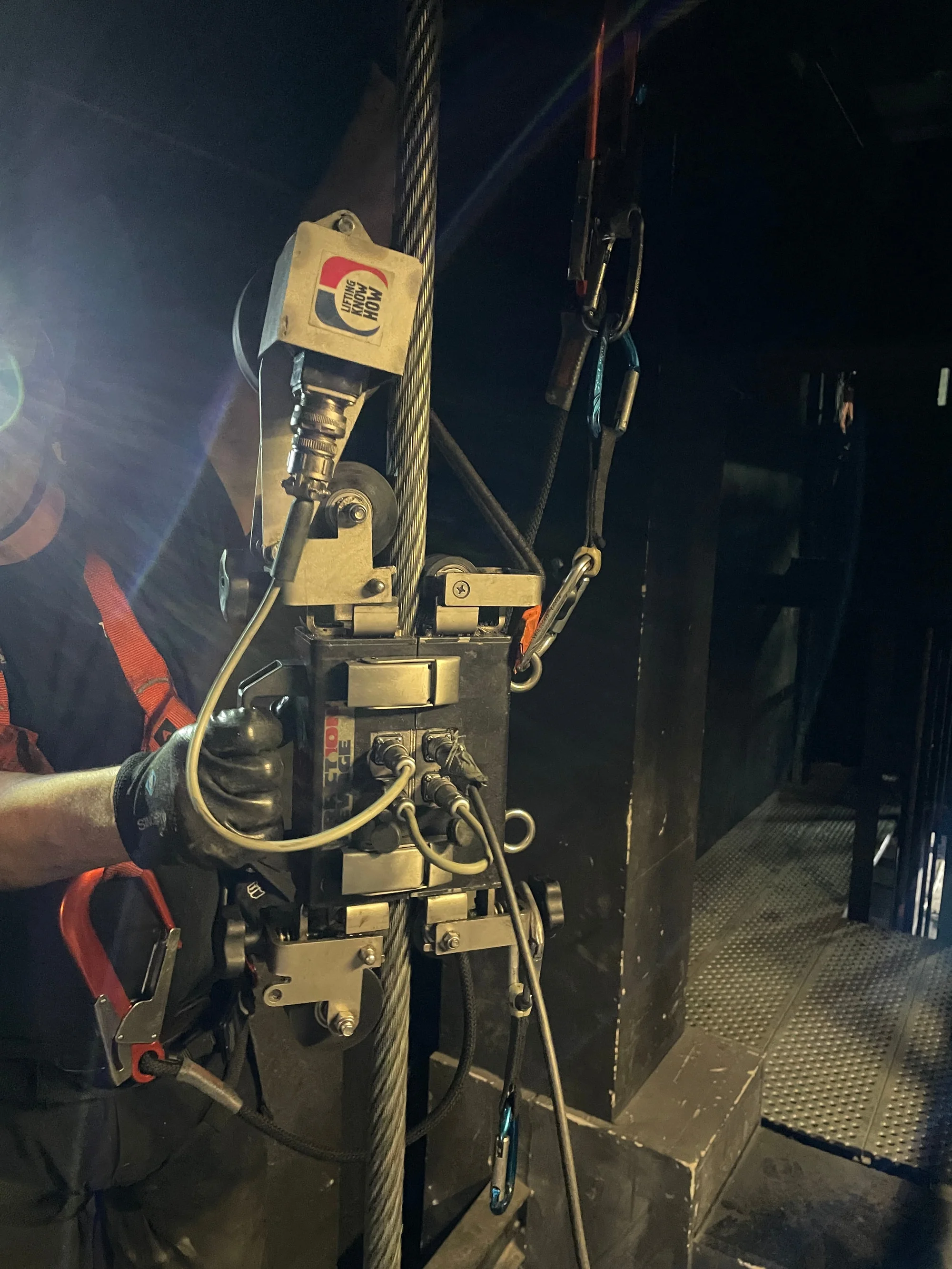Internal and non-destructive examination of wire ropes
Definition of the Magnetic Rope Testing
The MRT method is a non destructive, magnetic and contactless procedure that allows to detect broken wires, distortions and corrosion on steel wire ropes.
The MRT method
This magnetic method was introduced in the cableways sector to inspect the haulage and carriage and to entify external and internal defects. In the 80s this technique broadened the offshore heavy lifting market due to the increasing needs in terms of efficiency and safety. Most recent version of ISO4309 includes MRT as assessment method for the inspection of generic heavy lifting steel wire ropes.
Innovative concepts in the MRT, improving both magnetic development and user-interface facilitating a full wire rope inspection thanks to an automatic setting included in the software.
MRT devices are equipped with two different signals (on two separate electric circuits) that can be useful for the operator to identify and estimate damages such as internal and external broken wires, corrosion, wear, etc.
The LF signal is the main technique in this field and it is completely regulated by international standards. It consists in the measurement of
the leakage flux that appears when a defective portion of rope is introduced into the device.
Sectors concerned by the Magnetic Rope Testing
1. Heavy lifting
MRT made its first appearance in this sector in the '80s, especially for some specific applications. Although heavy lifting ropes don’t lift humans but loads, safety is really important because a failure can cause a disaster (imagine a steel mill, or a mine).
A strong progress in technology in the early 2000 led to the availability of heavy lifting devices, compliant with cableways standards, in order to improve the final user experience and simplify the use of MRT systems in this environment. The updated version of ISO4309 (2017) indicates MRT as stateof-the-art method for internal damages.
Non rotational wire ropes are actually used in many applications. Non rotational wire ropes behave differently according to each layer ropes. The degradation often starts from the inner part of the rope, and a standard visual inspection cannot be enough to ensure a correct evaluation. In these cases an MRT inspection is strongly suggested to avoid failures and damages.
2. Cableways
In this sector MRT is usually requested and, in some Countries, mandatory. Safety is the main concern and being aware of the actual conditions of the ropes is really important.
The MRT application is not limited to internal damages, but also for external wires. Furthermore, the cableway sector is the first environment in which specific standards for the MRT inspection have been developed. These standards, such as the EN12927, now applies to different fields.


3. Elevator market
The application of MRT to elevators is quite new. Since the early 2000s such devices and the technology is no longer just a ‘testing application’, but a recognized inspection system.
In this industry the safety is really important because an elevator machine moves people from one floor to another and millions of runs are performed every day. A failure in one or more ropes can cause injuries and other issues (stop of the plant, damages, etc.). Visual inspection is extremely difficult due to the tight spaces and to the time required. Maintenance process can benefit a lot from MRT in terms of time saving.
The elevator market is characterized by different types of suspension elements, such as steel wire ropes, coated ropes and belts. An elevator plant is not always the appropriate place to perform a visual inspection, it is usually too dark and tight.
AMC Instruments, together with Mennens Netherlands developed special tools to perform an accurate magnetoinductive inspection on all the mentioned suspension elements, also on belts and coated ropes where visual inspection is practically impossible.
These solutions allow to save time as well. Wire ropes on a fifth floors elevator can be inspected in less than 2 minutes (test setting included)
increasing tenfold the accuracy of a visual inspection performed in a dark and small environment.
4. Custom
Design customization is increasingly demanded in order to avoid standard and interface issues.
The technical maturity of the magneto-inductive methodology (60 years) and its inspection adaptability to any ferromagnetic materials create the best conditions for customization. The magneto-inductive method has been used in different sectors and applications, cableways, cranes, belt conveyors, elevators and pipes, granting the technicians an exhaustive vision of the object. The magneto-inductive method, thanks to its accuracy and reliability, it is claimed by: EN12927 (Cableway); ISO4309 (Heavy Lifting); UNI 1607593 (Elevator Technical Project).
Discover articles about this unique steel wire rope inspection methode, written by AMC INSTRUMENTS, a sister company of Traction Levage:
Visual inspection VS MRT inspection
Rope inspection, safety and the ISO4309 regulation
To LF or to LMA? That is the question!
The importance of interpretation
High magnetization VS low magnetization
The EN12927, is your MRT device in compliance with the standard?
8 Fundamental points to correctly choose an MRT device
3 Steps to develop customized magneto-inductive equipment




